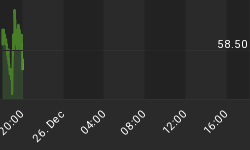Market Outlook
For the week ending March 22, 2013, the SPX was down 0.3%, the Russell small caps were down 0.7% and the COMP was down 0.1%.
All indices remain flat and in a confluence zone with no clear trend. Though equity prices may push higher, the question of trend sustainability grows as momentum is weakening and foreign exchange markets indicate a risk off environment is developing.
The most recent Commitment Of Trader (COT) data for S&P 500 futures also indicates declining momentum. Using an equal dollar weighted position, in just the past week non-commercial added 170,000 net long contracts bringing them to 620,000 net long, a multi-year extreme. Yet during this period the S&P 500 declined 4 points. And while non-commercial was adding long, commercial increased their net short position by 100,000 contracts bringing them to a multi-year extreme.
The model also confirms these extreme conditions based on price action across multiple time frames. And lastly, though JPY remains flat both pairs and futures, it has begun to show growing signs of a trend reversal short (pairs), long futures. Should this continue it will further limit upside in equity markets.
Asset Class Correlations
For the week ending March 22, 2013, the DXY was up 0.3%, 30 year yield was down 8bp and the USD/JPY was down 0.8%.
The commodity sector remains weak with DBC down 0.8% and signaled short, copper down 1.5% and also short while oil though flat was unchanged on the week.
The model remains flat USD/JPY, long DXY and short EUR/USD. The current DXY profile is showing clear momentum loss while JPY is very close to a trend reversal.
The multi-month divergence with equity and the EUR, copper and 30 year yield remains. As a result equity may show greater relative weakness as part of any future asset class convergence. Using any of these asset classes as a directional indicator may likely produce false signals. Our preference is to use JPY pairs.
This week saw a continuation of the divergence with 5 year Treasury break evens which were down 7bp on the week.
Sentiment
Though equity prices were muted on the week, volatility rose sharply with the VIX up 20%. Implied volatility skew remains high, averaging 124.17 for the week and closing at 122.18. There is currently a wide divergence and prior moves lower in the skew VIX spread have produced market weakness.
Skew is a measure of how implied volatility is distributed. The lower the reading the less skewed the curve, indicating a normalized distribution.
Funds Flow
For the period ending March 14, 2013, $0.8 billion flowed into domestic equity funds while $1.6 billion flowed in to both municipal and taxable bonds. This is a noticeable drop in bond inflows, driven by taxable bonds.
For the month of February, domestic equity funds had a net inflow of $1.3 billion while bond funds had a net inflow of $20.7 billion. For 2012, domestic equity funds had a net outflow of $149.3 billion while bonds funds had a net inflow of $295.4 billion.
Bottom Line
All equity indices are now flat and have entered a period of confluence. Any directional trades are viewed purely as a trade and not a sustainable trend. Equity markets have become extremely volatile and additional upside cannot be ruled out. Therefore it is advised that stops be honored, regardless of one's qualitative view. It is also important to watch the JPY, both futures and pairs to gauge overall risk sentiment.
About The Big Picture: All technical levels and trends are based upon Rethink Market Advisor models, which are price and momentum based. They do not use trend lines nor other traditional momentum studies. To learn more about how the models work, please click here or visit http://rethink-markets.com/model-profile
For a free two-week trial of any of our services, please send an email to info@rethink-markets.com and include "free trial" in the subject title.





















